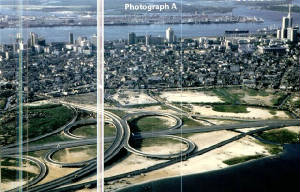|
Physical Environment:
The western region of Nigeria is on the
Gulf of Guinea, beside the bay, the Bight of Benin. The Niger River forms its northern and eastern boundaries. Much of this
region is savanna, although tropical rainforests used to grow along the coastlines. People in the western region of Nigeria
used to live in villages, but have moved to cities for work.

|
| A Western Nigerian city |
Ethnic Groups:
The Yoruba make up the largest ethnic group in the western region of Nigeria. Many Yoruba are
Christian, but some follow Islam or traditional beliefs. The Yoruba first came to Nigeria around 100 BCE. They lived in villages
that grew to kingdoms. These kingdoms each had their own kings and dialect (version of a language).
Culture:
The richer people live in one-story houses or apartments. The poor live in shacks that lack
electricity, running water, and garbage service, in groups called shantytowns. The Yoruba are known for
their drums and beads. Every object made for the kings are decorated in beads. Yoruba houses in the country are made
of mud-bricks with steep tin or iron roofs.
Economy:
City-Yoruba work in factories and offices, and as teachers, doctors, or engineers. Urban Yoruba
commute back to the country to work on their small family farms. The women sell goods, like yams, in street markets to
make money. They also sell homemade cloths, baskets, etc.
|

